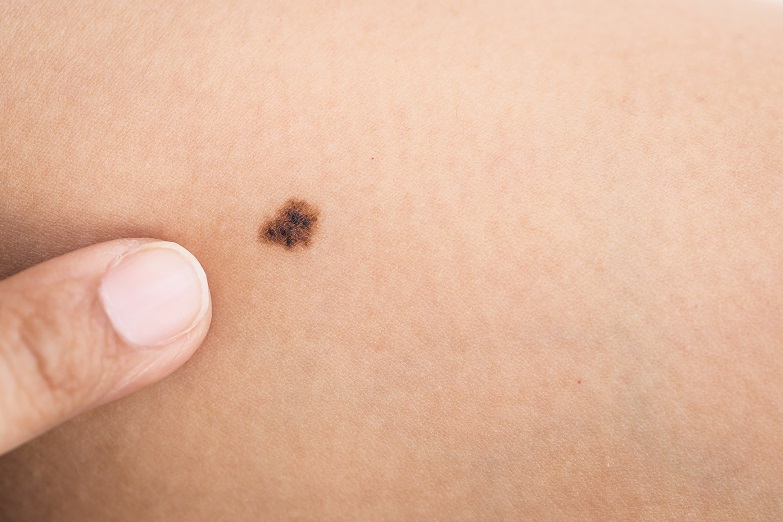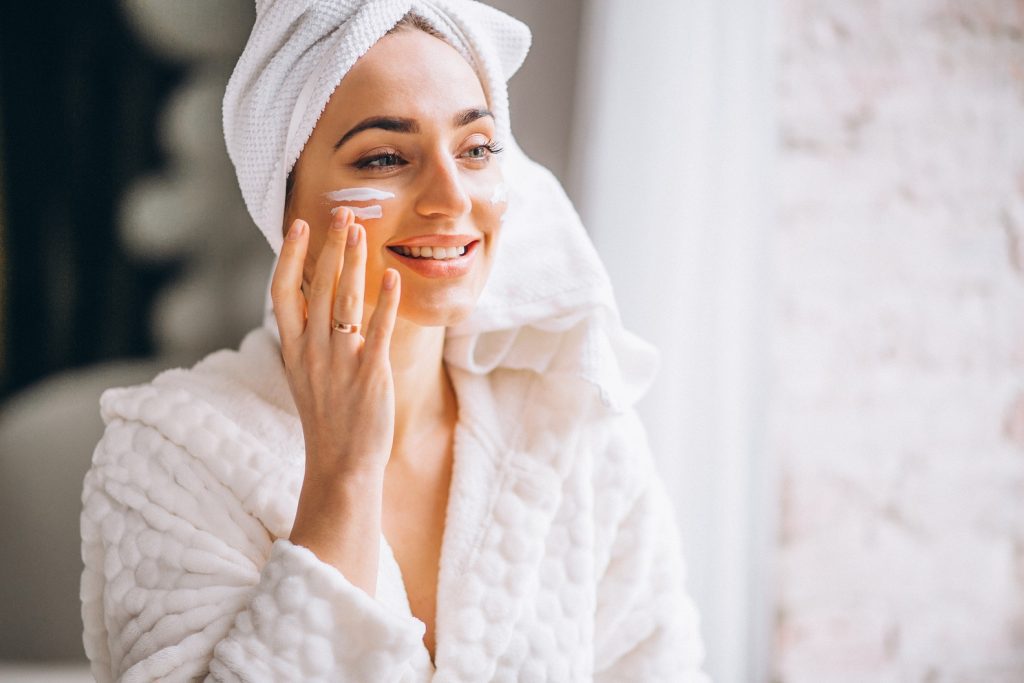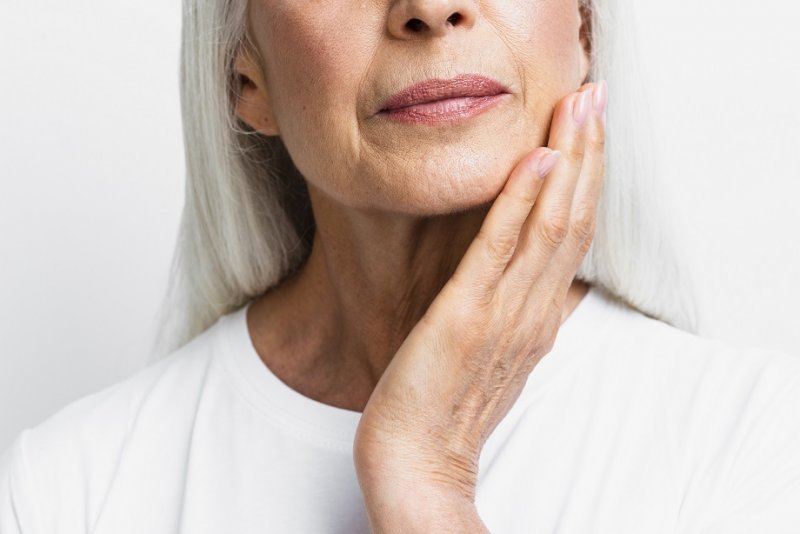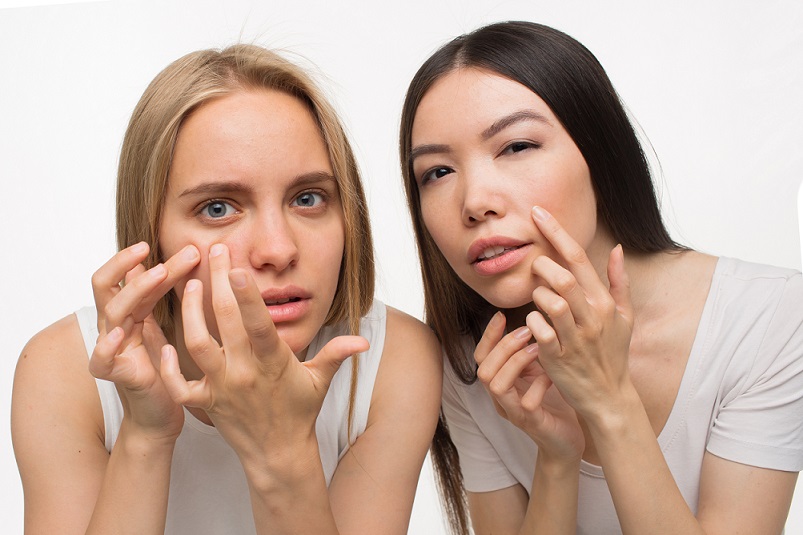
Source: thespinoff.co.nz/

Source: thespinoff.co.nz/
For Rosacea Awareness Month, April 2020, we asked our dermatologists for their top lifestyle tips to limit rosacea flare-ups.
Dr. Benjamin Barankin, Toronto dermatologist
Pay attention to your skin and use a skin diary to determine which triggers flare your rosacea. Minimizing stress and triggers such as spicy foods can be helpful.
No picking or squeezing of pimples is key.
I think gentle skin care is important – this includes a mild cleanser (not soap) and moisturizing in the evenings, and a sunscreen in the mornings.
Having a dermatologist is worthwhile as there are many great treatments now available.
Being part of an educational support group like ARSC is also important to find out what’s new with your condition for prevention and treatment.
Read more tips and advice from top dermatologist in Canada visit: rosaceahelp.ca

More than half of patients can now survive a deadly skin cancer that was considered untreatable just a decade ago, say UK doctors.
Ten years ago only one-in-20 patients would live for five years after being diagnosed with late-stage melanoma. Most would die in months.
But drugs to harness the body’s immune system mean 52% now live for at least five years, a clinical trial shows.
Doctors said it was an extraordinary and rapid transformation in care.
Melanoma is the fifth most common cancer in the UK and kills nearly 2,300 people each year.
If it is caught in the early stages then the chances of survival are good, but as the cancer becomes more aggressive and spreads throughout the body (known as metastatic cancer) then survival plummets.
“In the past, metastatic melanoma was regarded as untreatable,” said Prof James Larkin, a consultant at the Royal Marsden NHS Foundation Trust.
He said: “Oncologists considered melanoma different to other cancers, it couldn’t be treated once it had spread.”
People tended to live between six and nine months after diagnosis.
The trial investigated two immunotherapy drugs which are designed to enhance the immune system and let it attack cancer.
There were 945 patients in the trial, a third were given nivolumab, a third were given ipilimumab and a third were given both.
Doctors then looked at the five-year survival rate – the proportion of patients still alive after five years.
The results showed:
“It’s been an amazing surprise to see so much progress in such a short a period of time,” Prof Larkin told BBC News.
He said: “It’s been the most extraordinary transformation from a disease that was regarded, among all the cancers as the most difficult to treat, the most serious prognosis.
He said there is now “the possibility that 50% of people with stage four melanoma are alive five years after having immunotherapy treatment.”
The findings have been presented at a meeting of the European Society for Medical Oncology and published in the New England Journal of Medicine.
Pam Smith, 67, from Royal Tunbridge Wells, started on the trial in January 2014.
She was “devastated” when she was told her cancer was untreatable and says she “wouldn’t have stood a chance” without immunotherapy.
She had treatment once every two weeks for four months, but the drugs gave her such severe diarrhoea as a side-effect that she could no longer continue.
Her tumour halved in size after treatment and has not grown since. Pam now feels “brilliant”.
She told the BBC: “I might not have seen my grandchildren.
“It’s just over five years now since it happened and my youngest grandchild was six at the weekend.
“I wouldn’t have seem him grow up and the other grandchildren as well.”
Saying cured is always difficult in cancer, but five-year-survival is a hugely significant milestone.
Some patients taking the drugs are in total remission with no sign of any abnormality on scans.
Others like Pam still have a tumour inside their bodies, but they are no longer growing.
Out of the patients that survived, three-quarters no longer need any form of cancer treatment.
Immunotherapy is Nobel Prize-winning science that is making the untreatable treatable.
The field is one of the most exciting in cancer treatment.
The immune system constantly patrols our body, fighting off hostile invaders such as viruses.
It should attack cancers too – but cancers are a corrupted version of healthy tissue and can evolve ways of evading the immune system.
Ipilimumab and nivolumab both stop some cancers from hiding and allow the immune system to attack.
They interrupt the chemical signals that cancers use to put the brakes on the immune system.
Nivolumab blocks the off-switch on white blood cells called PD-1. Ipilimumab blocks a similar switch called CTLA-4.
It is described as taking the brakes off the immune system.
“By giving these drugs together you are effectively taking two brakes off the immune system rather than one so that the immune system is able to recognise tumours it wasn’t previously recognising and react to that and destroy them,” Prof Larkin said.
Yes, the drugs are changing the way the immune system works inside the body and that can have consequences, such as fatigue, skin rashes and diarrhoea.
Some are severe enough that patients like Pam cannot complete a full course of treatment.
However, even a brief spell of immunotherapy had a lasting benefit on the immune system and on patients.
This is in stark contrast to other cancer treatments such as chemotherapy which stop working the moment the treatment stops.
Although this lasting changes means side-effects could continue to emerge as patients get older.
Yes, earlier results from this trial led to these drugs being made available around the world – including on the UK’s National Health Service.
The decision to approve the drugs for melanoma was one of the fastest in NHS history.
And they are also being used in other cancers such as lung and kidney.
Prof Charles Swanton, chief clinician at Cancer Research UK, said the progress in melanoma had been “incredibly fast”.
He said: “I’m inspired seeing the advancements being made in the development of immunotherapies, and their potential to transform the outlook for some patients, giving them time with friends and family they never thought they would have.
“And now work continues to make sure more people with different types of cancer can also benefit from these innovative treatments.”
Credit: James Gallagher, bbc.com

Winter seems so long and although I feel we are finally on the upside coming towards spring, I find myself dragging much more than I would during the nice weather months. No matter, whether I get a full night’s sleep (not often anymore, I am afraid) or 5-6 hours of interrupted sleep, my skin, my hair and my body show visible signs of fatigue. I know as the days start to get longer and the sun is shining a little brighter some of these symptoms will subside, but for now what are my options?
We tend to think big. In other words to improve the skin we think in terms only of lasers or more aggressive treatments. Well, I absolutely agree that this is the time of year to clear up lingering concerns such as sun damage, sun spots & freckles, broken vessels, fine lines and wrinkles and scars. I believe this is a great time to begin laser hair removal to alleviate the constant shaving (and razor bumps!!) that can be so annoying. But there are several modalities that can help us achieve our goals. In-clinic procedures really are the only way to truly achieve the end results for some concerns but that doesn’t mean we should be neglecting what we need to be doing at home.
“Any effective way to topically treat aging skin must include a multi-modal approach that combines symbiotic ingredients to ameliorate cutaneous damage” said dermatologist Dr. Sameer Bashey recently. I would go one step further and say that this analogy applies to acne, scarring, pigment and just about any other skin deviation that a patient is dealing with.
Clinical studies have proven over and over again the difference between using medical grade products vs store bought products on the skin. Multiple studies done by ZO Medical, including the latest study, a 12 week case series on their Wrinkle + Texture Repair product with active Retinol show short and long term results, and bragging rights, that simply cannot be challenged by over the counter products. And it isn’t just the specialty products that make a difference to the skin in a way drugstore brands cannot. Using an alkaline based cleanser on the skin and expecting your products to penetrate is like asking yourself to magically walk through a locked door. Products need to work synergistically, and preferably from the same line in order to optimize the degree of change needed in the skin’s dermis, and ultimately, the surface of the skin.
My boyfriend’s teenage daughter used the GSR kit from ZO, which is their starter kit, for 2 days and noticed her acne disappearing quickly. She is thrilled with her results, and of course thinks I am superwoman for getting her on the system. It is easy to use and the backbone for all conditions from acne to pigment to rosacea and on and on.
People are so easily inclined to believe everything they read on the Internet, especially if it saves them time or money. Unfortunately there is a lot of misinformation, probably more than there are truths out there. Medical grade home care has documented medical studies that prove their worth and how they can be effective for improving in–clinic treatments when used both before and after treatments. Quality over quantity. Similarly with food; garbage food is unhealthy and makes us sluggish and is damaging to the aging process. Medical-grade home care keeps us looking alert, aids the health of the skin and even corrects damage. Used in conjunction with services at a qualified and respected clinic like Toronto Dermatology Centre, you are giving your skin, no matter the concerns you may have, the fundamentals needed to reverse and correct imperfections.
We can’t speed up the days till Spring gets here when days get longer and warmer, but we can slow down the clock when it comes to aging and the health of your skin. Don’t make excuses! Get on board with the ZO GSR (Getting Skin Ready) kit and have our medical esthetician customize it for your individual concerns with Daily Power Defense, Wrinkle + Texture Repair or whatever is appropriate. Beat the winter blahs and have gorgeous skin year-round.

Credit: NBCnews.com
Dermatologists diagnose and treat more than 3,000 skin, hair, and nail conditions and diseases. Becoming a dermatologist requires at least eight years of education, an internship, a dermatology residency and 12,000 to 16,000 hours of patient care. After residency, dermatologists can become board-certified. Board-certified dermatologists have the training and expertise to provide the best possible skin, hair, and nail outcomes for patients.
Learn More: www.aad.org/public/fad/why-choose-a-derm

Wrinkles, fine lines and pigmentation are inevitable skin woes that often appear as we age. While we like to place blame on getting another year older, the main culprit is photoaging — damage to the skin caused by exposure to sunlight and ultraviolet (UV) light. Responsible for 90 percent of visible changes to the skin, photoaging is a direct result of cumulative sun damage you’ve been exposed to throughout your life.
“Premature aging of the skin is caused by light exposure,” says Melanie Palm, MD, Medical Director of Art of Skin MD in Solana Beach, California. “This can also include visible (HEV) and infrared light, which are other parts of the light spectrum.”
Light is around us at all times, making sun damage a year-round concern for healthy skin. Chronological skin aging can’t be helped (it’s tough to fight time), but photoaging accelerates the process. The good news is that it’s completely preventable. We turned to Dr. Palm to explain the causes and symptoms correlated to photoaging and the treatments that can keep you out of the antiaging aisle just a little bit longer.
Skin is composed of three layers: the epidermis, or outermost layer; the dermis, or middle layer; and the subcutis, or bottom most layer. The dermis contains collagen, elastin and other fibers that support the skin’s structure. It is these elements that give skin its smooth and youthful appearance — and that are damaged by UV radiation.
The UV radiation that affects the skin is composed of two different types of waves, UVA and UVB. When UV rays hit the skin, they damage its DNA, and cells in the dermis scramble to produce melanin in the epidermis to prevent further damage. This is the process that gives you a tan, which is really just your skin attempting to block the radiation from penetrating your skin.
UVB rays are shorter than UVA rays, and are the main culprit behind sunburn. The UVA rays, with their longer wavelength, are responsible for much of the damage we associate with photoaging. UVA rays penetrate deep into the dermis, where they damage the collagen fibers. This damage causes increased production of abnormal elastin. The unusual amounts of elastin result in the production of enzymes called metalloproteinases. These enzymes, which rebuild damaged collagen, often malfunction and degrade the collagen, resulting in incorrectly rebuilt skin. As this process is repeated with daily UVA exposure, the incorrectly rebuilt skin forms wrinkles, and the depleted collagen results in leathery skin.
While sunlight is the number one cause of skin aging, about 10 percent comes from HEV and infrared light. HEV, or high-energy (blue) visible light, which emits from the sun and devices such as your phone or computer and can be seen by the human eye. This light doesn’t stop when the sun goes down. Infrared light is invisible to the eye and rather is felt as heat, like in a microwave.
Fortunately, neither of these has been linked to skin cancer, but they have been shown to break down collagen and skin elasticity. In recent years, some research is focusing on the additional effects of these other light forms may have on the skin. According to a 2014 study in the journal Photodermatology, Photoimmunology & Photomedicine, non-UV solar radiation significantly contributes to photoaging and needs to be taken into consideration when formulating a skin-protective regimen.
The effects of photoaging can manifest in many ways. “Melasma, freckles, actinic keratoses and texture changes are all signs of photoaging damage,” says Dr. Palm. The type of damage one deals with, however, is unpredictable and dependent on the individual.
For example, sun exposure (and hormonal changes) can cause melasma, which is a condition causing grayish-brown patches to appear on skin. Actinic keratoses (AKs), or precancerous spots, directly correlate to chronic sun exposure, which can increase your chance of developing skin cancer. Textural changes in the form of deep lines, waxiness or a leather-looking appearance can lead to uneven, dull looking skin. Remember the cute freckles you got as kids? Those were actually warning signs from your body saying you’d had a lot of sun exposure. Broken blood vessels that exist as redness or blotchiness on the nose, cheeks or neck may resemble a slight burn and are another sign of sun damage.
Wearing sunscreen every day can do more than prevent skin cancer — it can prevent signs of photoaging as well. In fact, many people tout sunscreen for being their go-to antiaging weapon, and for good reason. Regular use has been shown to keep photodamage at bay for a longer period of time. Dr. Palm recommends a physical sunscreen (containing zinc oxide and/or titanium dioxide), which has a broader coverage for UVA rays. It should be at least SPF 30.
“Some sunscreens now contain DNA repair enzymes that help undo previous damage by using nearby undamaged DNA to fix the area,” says Dr. Palm. A 2017 study in the Journal of Drugs in Dermatology showed these products can enhance antiaging regimens and, more specifically, reduce risk of developing AKs.
If you’re already experiencing some of the above-mentioned signs of photoaging, you’ll also want to incorporate skin care products designed to reverse sun damage. Certain ingredients such as vitamin C and E and green tea are antioxidants that stabilize the skin and help brighten dark spots. An antiaging hero, retinol, used nightly, will boost cell turnover to create a healthy and youthful appearance.
“There’s really no reason for photoaging,” avows Dr. Palm, “We can keep skin looking good for decades if we just take care of it.”
Credit: Arielle Grabel, The Skin Cancer Foundation

It’s pretty much assumed that nearly every teen will deal with acne at some point. But, even though teenage acne is incredibly common, it can be hard to know how to help your child when they’re going through it.
Before you panic and assume your child is doomed to spend their teen years with acne, know this: Dermatologists say there’s a lot you can do to help.
There are actually a lot of things going on at once that can lead to acne in teens. “The biggest culprit for teen breakouts are hormones,” Joshua Zeichner, MD, a New York City-based board-certified dermatologist, tells Yahoo Lifestyle. “During puberty, hormone levels soar, stimulating oil glands into overdrive. This ultimately blocks the pores, promotes inflammation and leads to breakouts.”
Stress plays a role too. “Students have been evaluated during testing and found to have a greater risk of acne breakouts, as compared to other times during the school year,” says Zeichner says
Nutrition can also be a factor, according to California-based dermatologist Cynthia Bailey, MD. High glycemic foods, like white bread, fries, sugary foods and dairy, in particular, “have been linked to acne,” she says. Poor hydration, sweating a lot during sports and less-than-optimal skincare can also play a role, Gary Goldenberg, MD, assistant clinical professor of dermatology at the Icahn School of Medicine at Mount Sinai in New York, tells Yahoo Lifestyle.
Some things, like stress and hormonal changes, are unavoidable. But other acne-causing factors can be helped by making the following fairly simple lifestyle tweaks.
“High glycemic foods are those that raise your blood sugar fast,” explains Bailey. Sugary foods and drinks are big culprits, but foods with refined carbohydrates like chips, crackers, pasta and pizza can be problematic, she says. Focusing on foods that are low-glycemic like oats, lentils, non-starchy vegetables and lean meats can help, says Bailey.
If your teen’s acne is bad, it’s worth cutting back on how much dairy they have or even trying them out on a dairy-free diet, Goldenberg says. Milk contains substances that your body converts to testosterone (a hormone that causes oil production and acne), explains Bailey. Milk also stimulates your body to produce a chemical called insulin-like growth factor, which “increases your body’s own natural testosterone hormones… causing more oil production and possibly more pimples and blackheads,” she adds.
“I advise choosing more vegetarian options and only organic animal products, since these may have hormones that affect your hormones,” says Goldenberg.
Many skincare products that are non-comedogenic will actually state this on the label. Zeichner notes, “This means that they will not block your pores.”
These can block pores and lead to more acne, according to Zeichner. If your teen wears makeup, he recommends skipping liquid foundation and using mineral or powder makeup instead.
Cleansers with salicylic acid and glycolic acid can help combat acne and prevent future breakouts, Goldenberg explains. At the same time, “opt for gentle and/or pH balanced cleansers that won’t irritate skin,”says Bailey.
Not showering or washing up after exercise can lead to breakouts. “Damp, oily skin promotes the growth of germs that can cause acne,” explains Bailey. Washing up as soon as possible after a workout or game can help.
According to Bailey, twice a day and after exercise is ideal. And, when they wash, make sure they’re not being too vigorous. “Do not over-scrub the skin as it can lead to skin barrier disruption, inflammation and worsening of acne,” says Zeichner.
It depends. If your child is breaking out and it’s bothering them, you don’t need to wait until it gets worse to see a dermatologist, says Goldenberg. But, if you’d rather try to see how far you can get with at-home treatment first, Zeicher recommends making changes and then seeing where that gets you. If your teen’s skin is still bad after to two to four weeks, or it seems to be getting worse, it’s time to see a skin specialist.
Credit: Korin Miller, Yahoo Lifestyle
Keeping up with Kim Kardashian West isn’t that hard. The reality star, who has been very candid in the past about her struggle with the skin condition psoriasis, has once again kept it real with her revelation that she’s also had a scary bout with psoriatic arthritis (PsA). West recently penned a personal essay on her sister Kourtney’s new site Poosh describing her history with red, itchy, bumpy flare-ups and an alarming incident that left her hands completely immobile.
In her essay, West recounts the events that led to her diagnosis: “One night, I woke up to use the restroom and I physically couldn’t pick up my phone. I thought it was strange but maybe I just slept on my hands weird and I was so tired, I didn’t need to be checking my phone at that hour anyway…I woke up that morning and I still couldn’t pick up my phone. I was freaking out—I couldn’t even pick up a toothbrush, my hands hurt so badly.”
What It Is
“Psoriatic arthritis is a type of arthritis that can destroy joints,” says Wilmington, NC dermatologist Kendall Egan. “Although it is associated with the classic psoriasis skin spots, you can develop psoriatic arthritis without having any skin lesions.”
Scottsdale, AZ dermatologist Anthony Nuara, MD says he too suffers from psoriatic arthritis and has learned to manage it. “While it may be an autoimmune disease, we have not yet identified the target the immune system is seeing. There is no blood test for PsA,” he says. “It is typically found in conjunction with psoriasis, but not always. It strikes roughly a third of people with psoriasis, myself included. The joint pain is usually worse in the morning and improves with use throughout the day.”
How It’s Treated
“Psoriatic arthritis is stoppable, but not reversible,” explains Fort Lauderdale dermatologist Dr. Igor Chaplik. “It will continue to damage the joints unless a form of internal medication is introduced. Certain diets may help avoid flares of mild cases of psoriasis and psoriatic arthritis, but to protect the joints medication is needed.”
Even before her diagnosis, West admits she’d tried every natural treatment to keep her psoriasis at bay: “Before the arthritis hit, I spent about four months doing everything natural—every ointment, cream, serum, and foam you can possibly imagine and everything from the dermatologist. I even tried an herbal tea that tasted like tar. I tried celery juice for eight weeks. Then I’d do celery juice mixed with the tea. I would do that twice a day. I was just exhausted by everything. I changed my diet to plant-based (which I still follow).”
Diet is one way to treat psoriasis and PsA, but another is through a class of medications called biologics. “They are antibody-based therapies that can be injected in the home or office,” says Dr. Nuara. “There are several, which is wonderful, but they all have pluses and minuses. This is where a conversation with a board-certified dermatologist and/or rheumatologist is key.”
Vernoa, NJ dermatologists Avnee Shah, MD adds “Both biological injectable agents and oral medications like Otezla can simultaneously treat both joint and skin disease.”
PsA can come on suddenly and with no warning. “It can strike even before skin psoriasis is evident,” says Guelph, Canada dermatologist Dusan Sajic, MD. “The key is to notify your doctor if joint pain is worse with rest and in the morning. It’s very important to treat PsA as early as possible, before any damage is permanent in the joints. We are living in a golden age where more and more treatments are becoming available. Our ability to modify, rather than stop the immune response, is improving. This means the risk of side-effects, such as infection, is improving.”
Credit: By Tatiana Bido, newbeauty.com/